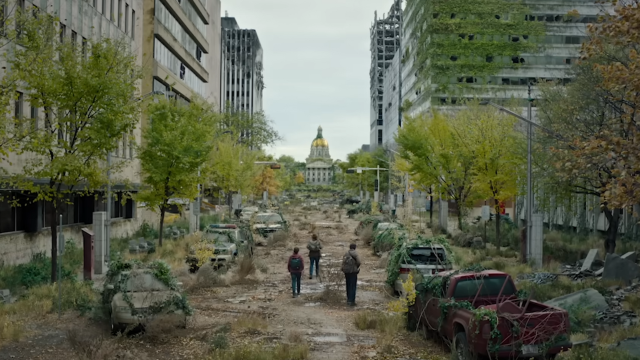Zombie apocalypses are fairly unlikely to happen, even if The Last of Us‘ more grounded approach to the zombie genre has a bit more believability to it with a focus on a real fungus. But, hypothetically, if a zombie apocalypse were to come to Australian cities, which would be the best prepared?
That’s a question that the team over at Rentola have set out to answer, out of boredom I presume. Rentola lists available rentals similar to realestate.com.au or rent.com.au, and is the kind of website (and app) you should check in on now and again if you’re experiencing the ongoing rental crisis.
Speaking of crisis, what if us city folk weren’t at the whims of huge price increases and were instead concerned with an ongoing zombie apocalypse? Well, Rentola reckons the safest place to be is Brisbane.
Pulling data from the Australian Bureau of Statistics to create five separate categories (vulnerability, hideouts, supplies, safety and mobility), Rentola believes Sydney fits into position two and Melbourne at three, with Hobart all the way at dead last.
Sure, I guess, maybe Australia’s more densely populated cities have a better zombie survival rate? I mean, giving Sydney and Melbourne high scores for ‘hideouts’, which is apparently based on the appropriately sized housing index, the number of total dwelling units and seperate houses, is kind of rich considering that we are, in case you forgot, currently undergoing a horrific rental crisis. I hate to break it to you Rentola, but even if I had a bunch of biters at the door of my non-air conditioned Inner West Sydney apartment, I’d probably struggle to find a place to move to anyway.
Conversely, Hobart doesn’t really make sense in last place, considering its low population and that it’s the capital of a f*cking island. Less zombies and a water moat seem safer to me.
But I digress. How about we look at another one of those categories: vulnerability.
Oh no. Here’s how Rentola describes the category, which pulls data from the population density index, death rate index, disability index and long-term health conditions data:
“Certain places are simply created for epidemics and their rapid spread. Think back to the past few years. The huge population density, the influx of tourists, the percentage of chronic diseases among the population and even the disaster risk index, yes, we used all this to calculate which of the provinces is most vulnerable in the face of the wave of the dead.”
Okay, so this article started as a fun little “hey that’s a quirky data analysis Rentola has put together, I could give it a writeup cause it seems fun”, and then I notice that they’re factoring in data on people with disabilities and using it as an indicator for zombie survivability. It’s a fun idea that reads as tone-deaf at a second glance.
This isn’t fun, and it isn’t something we can bat off as tongue-in-cheek. During the height of the COVID-19 pandemic, people with disabilities were at greater risk. I’m not going to bat this off and you shouldn’t either.
Anyway, if you’re interested in reading Rentola’s research on Australian cities taking on a zombie apocalypse, here it is.
Meanwhile, on the ground in Sydney, my rent, and the rent of many other’s, is going up. If it’s going up for you too, I feel your pain.
